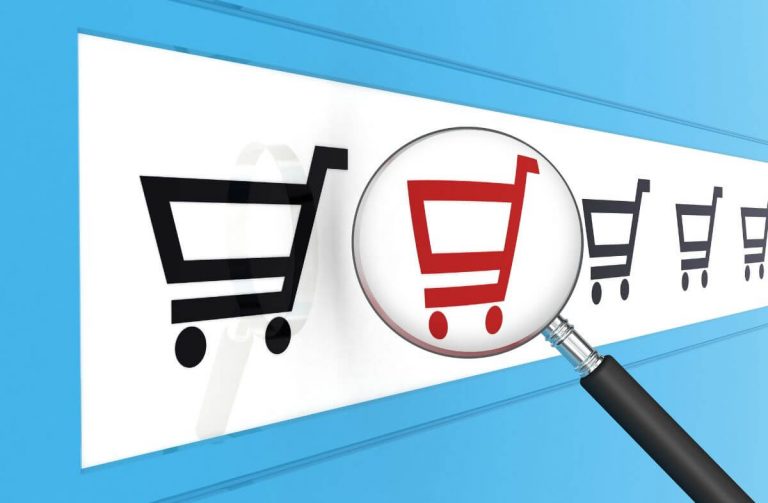eCommerce businesses face a highly competitive, dynamic landscape of consumer trends, competition, and overarching market forces. Succeeding in this environment is challenging, and the difficulty is only increasing.
Marketplaces like Amazon and Walmart are where much of the battle for customers plays out — on digital shelves. In brick-and-mortar stores, a customer might consider several options on the shelf based on pricing and branding, then pick one and head for the cashier.
But digitally, customers have a wealth of data at their fingertips: reviews, price comparisons, brand reputation, and alternative solutions to their pain points.
So, how can an eCommerce business consistently win customers over and create lasting success? Digital shelf analytics — analyzing historical and real-time data about your products, unlocking new insights to refine listings continually.
We’ll be diving deep into what digital shelf eCommerce analytics means and how you can make it work for your operation.
What is Digital Shelf Analytics?
Digital shelf analytics are eCommerce businesses’ KPIs to track, refine, and predict their product’s success on eCommerce marketplaces. Purpose-built platforms like Cluster provide digital shelf analytics measurement, evaluation, and data-driven insights — allowing brands to refine or adjust strategies to boost sales.
KPIs and the components behind them create the baseline for understanding past and real-time performance. From there, the right platform analyzes the available data and provides valuable insights to optimize product lists, branding strategies, and ultimately boost revenue.
But what exactly is the digital shelf? Let’s briefly zoom out and explore the environment being analyzed by these purpose-built platforms.
Defining the Digital Shelf
The digital shelf is the online equivalent of the physical shelf in retail stores — it’s where brands compete to be picked by customers. Unlike physical shelves, digital shelves don’t always have a linear customer journey, like grabbing an item and going to the cashier.
Instead, customers might add your product to their cart, explore other options, forget about your product, see your brand on social media, and finally return to the cart to check out. That example is still a relatively short customer journey; higher ticket items can take much longer to close the sale.
Digital shelves also include a range of touchpoints, like search engines, social media accounts, and your seller page, which generate a wealth of data that must be analyzed with digital shelf analytics software.
Core Components of Digital Shelf Analytics
A successful digital shelf that consistently makes sales and boosts revenue requires strategically refining several components of your products. A few of the core components to monitor and optimize include the following:
- Individual listings: The heart of any product is its listing, the home of information, images, and specs about the product customers are looking for. Improving the different components of each listing has a significant impact on digital shelf analytics.
- Product reviews: Reviews are powerful and critical user-generated content that gives your product social proof. Earning positive reviews takes time, as well as delivering consistently high-quality products that follow up on the expectations set by the individual listing.
- Pricing: Pricing and promotions are fundamental factors consumers consider when weighing their options. Your chosen price needs to find a balance between profitability and competitiveness. Adopting the right pricing tools and careful messaging helps you price products that win on the shelf.
- Search results: When someone searches “candles” on Amazon, Walmart, or other sites, the list of products appearing is ranked similarly to a standard web search. Using relevant, targeted keywords and continually refining product listings goes far in helping your product climb the ranks and stay at the top.
- Branding: Your brand and related messaging help differentiate you from the competition — a critical aspect of boosting digital shelf metrics. Many products, like hair care, have a significant pricing range largely based on brand reputation and messaging. Determine the message you want to convey and explore how several elements of your listing can effectively deliver your message.
- Overall experience: Customer or user experience is everything, especially in markets with nearly ubiquitous products. The speed of shipping, providing instructions, and customer support experience all add to a positive or negative customer experience. This experience influences reviews, customer loyalty, and word-of-mouth recommendations — or warnings.
- Analytics, evaluation and testing: Every component we’ve explored above influences KPIs related to digital shelves. The final component is evaluating them carefully and finding opportunities to optimize these components to land more sales. Tracking performance, gaining data-driven insights, implementing changes, and measuring their impact is the winning formula for competitive eCommerce marketplaces.
Crucial Metrics in Digital Shelf Analytics
What specific metrics and KPIs are important for digital shelf analytics? While your eCommerce business generates a wealth of data, not all are the focus of digital shelf analytics. Instead, the following metrics inform the insights gained from digital shelf analytics:
- Click-through rates (CTR): How many people who see your product in search results or recommendations click through to see your listing and learn about your product? A high CTR often leads to more sales, making it a cornerstone KPI for digital shelf analytics.
- Conversion rates: Out of people who view your listing become a customer? A high conversion rate directly relates to more sales, reviews, and growing brand awareness. Analyzing and optimizing product listings to boost conversion rates is a core focus of analytics platforms.
- Customer reviews: What star ratings and written reviews are past customers leaving? There’s revealing information about how to improve or keep doing in these metrics. Digital shelf analytics software aims to derive insights from reviews.
- Revenue: Is your revenue steadily growing over time? While looking at a single moment in time can help you understand current profitability, changes in eCommerce revenue over the life cycle of your products allow for deeper insights.
- Search rankings: Are your products visible above the fold on an eCommerce marketplace? The ranking relies on enriching product data with the right tags, titles, and descriptions, refining them over time as results are evaluated.
Key Best Practices for Digital Shelf Analytics
Businesses are rapidly adopting digital shelf solutions, with the overall market size for these specialized platforms expected to grow at an astounding CAGR of 40.1%, going from $381 million in 2021 to $7.49 billion by 2030. Those who adopt the right platform and implement the right best practices will be set up for success now and in the future.
So, let’s break down these practices to help you gain an edge and set your brand up for even greater success with digital shelf analytics.
Regularly Audit Your Digital Shelf
Digital shelf performance analytics is intended to equip you with data-driven insights into how you can improve your shelf. You need to regularly audit your shelf to ensure you’re following these insights, whether that means changing prices, descriptions, or images.
Sometimes, you’ll want to make changes to specific products based on your chosen analytics platform. Otherwise, create a schedule for auditing products and making changes to specific components to enhance core metrics, as your platform has informed us.
Refine Product Titles, Descriptions, and Media
Similarly, pay special attention to titles and descriptions, as they heavily influence click-through rates and conversion rates. Even if this data is ideal now, consumer searches and requirements never sit still, so you need to continually refine them. Your analytics will shed light on the overarching trends and your current and past results.
Additionally, prioritize high-quality images and videos that showcase what’s unique and valuable about your product, along with establishing expectations. For example, videos demonstrating how to set up a tent can help ease consumer hesitation about setup processes, preventing negative reviews if they expect a pop-up tent.
Optimize Pricing and Sales
Pricing on eCommerce sites is one of the most essential components of a listing. The days of setting a static price based on your internal calculations are long gone — dynamic pricing that also considers the competition’s prices, consumer preferences, and prevailing market conditions is critical.
An ideal digital shelf analytics platform aggregates all this data and helps you modify pricing as necessary, informing even hourly changes if necessary to maximize revenue and conversion rates.
Solicit User-Generated Content
Reviews, ratings, and social posts are all powerful user-generated content that informs potential buyers about the experience they can expect. Not having enough reviews can harm your impression of possible customers, even if the ones you have are positive.
Ask for reviews once a customer receives your product; just make sure you’re in full accordance with the marketplace’s Terms of Service. Including a thank you card asking for reviews can go far in motivating reviews, as can a follow-up email.
Unlock Granular Real-Time Analysis with Cluster
eCommerce is a fast-paced, highly competitive world, regardless of specific industry. Gaining a slight edge over your competitors can have significant benefits, so imagine the rewards of a significant advantage.
Digital shelf analytics is mission-critical for eCommerce businesses, and those that leverage advanced technologies gain an advantage over those stuck in the past. In the age of Big Data, APIs, and AI, leveraging the latest tools can mean the difference between success and stagnation.
Cluster’s digital shelf analytics capabilities go beyond the basics and provide real-time product tracking, market share, SKU-level analytics, and overall industry insights — so you always have visibility into the present and future.
Ready to increase click-through rates, conversions, and revenue? Book a demo today to learn more about how Cluster can help you gain a lasting advantage.





